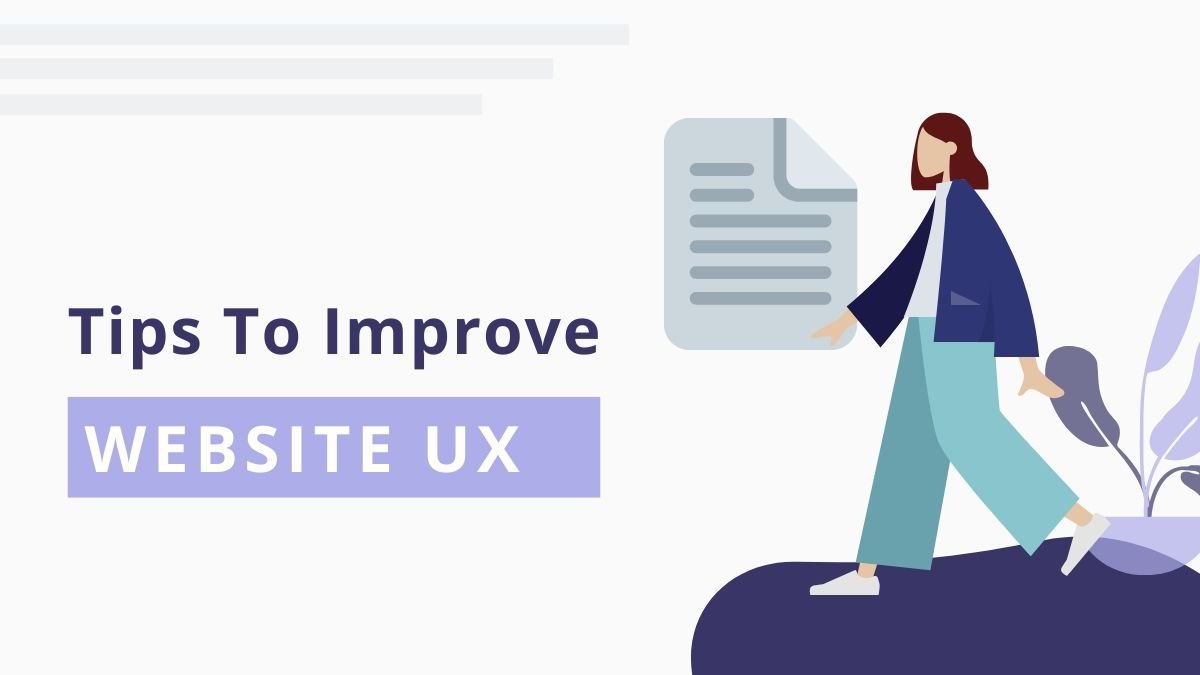Increase your business conversions with these smart tips for improving website user experience. In 2020, the internet is the primary way in which businesses and brands connect with their audiences.
With the decline of the high street, and online giants like Amazon continuing to grow to unimaginable levels, we can expect the web to be the frontline of business for the foreseeable future.
But this doesn’t mean you can just set up a website with the bare minimum effort and expect business to come flying in.
With literally countless options to choose from and almost no time to browse them, customers are highly sensitive to the experience a website provides them. If your site provides sticking points such as confusing design or slow loading – you’re fighting a losing battle as people will simply click off your site and look for the next option.
Whether you work with in-house teams or top UX design companies, there are some simple tips that can allow you to improve the user experience of your website, and pulling them off in the right way can lead to increased traffic, better conversions, and increased brand loyalty.
It’s your lucky day because we’ve listed some of the most important rights here:
White Space is Not Your Enemy
When designing a website with marketing in mind, it can be easy to want to maximize your use of space. This might encourage you to cram every corner of the screen with calls to action, ad banners, and references to other pages in order to make use of every bit of available screen real estate.
However, this drastically reduces the legibility of your page and can cause users to feel completely overwhelmed, preventing them from reading your pages completely. When used correctly, white space helps a site to feel more clean, organized and easy to read.
“According to CrazyEgg, this can improve user retention by up to 20%. So, if you are going to use a website builder, make sure to check out the design templates that they offer. You can do this by searching for a complete review of your preferred website builder, such as typing “Squarespace complete review” on Google.”
Use Friendly & Helpful Calls to Action
We all know that calls to action are crucial. Without them, your site is just a collection of information, with no reason for readers to act after experiencing it.
With that said, it’s not a good strategy to plaster your site with flashing icons and huge buttons saying “Click here!” in a clinical manner.
Use your calls to action in a thoughtful manner based on what a visitor to each web page would be looking for.
As an example, if we were to include a call to action on this page, what would be more effective out of the following?
A: Click Here for Cheap Web Design Services!
B: Do these tips seem a little too difficult for you to carry out? Would you rather get some expert help with your UX design? Click here to see our range of services!
We can assume most people who land on this page are doing so because they have googled “tips for improving a website’s user experience”, or something similar. So while A might attract some people, it comes across like the website is in existence for the sole purpose of winning customers, which will turn people off.
B, on the other hand, gives off the vibe that you are an authority in your niche, and have provided the web page with the sole purpose of informing people, but that you are available to help if they feel they would rather not do these tasks alone. It also simply suggests they click through to read more about your services, instead of suggesting an obligation to buy.
Even if you have call to action A in large, colourful flashing letters on your site, and B as a small, text link at the bottom of the page – we’re willing to bet you’d get higher conversions from B.
Break Up Text to Make it Easy to Scan
A long block of text is quite intimidating to read, especially for those with low attention spans or limited time.
Breaking up your information using techniques such as:
- H1s and H2s
- Images and diagrams
- Bullet points and ordered lists
- Colored boxes
..will help people who can read to find the information they need. This increases the chances of them interacting with your calls to action, or returning to your site in the future.
A block of text that is difficult to read will more than likely lead to them looking for an easier to parse the source of information – in which case you’ve lost that potential lead for good.
Be Mobile Friendly & Responsive
This might seem obvious, but with many eCommerce packages not including such an option, and many web design consultancies charging extra for it, you have to be sure to include this from the start.
In 2019, mobile phone traffic accounted for over half of all web traffic.
In other words, if your site is slow or difficult to navigate on smartphones, you are closing yourself off to 50% of potential customers.
Even people who have already browsed your site on the desktop may decide to come back and purchase while on the train, and if they are unable to or find the experience awkward – you can’t be sure they’ll ever come back.
We hope this list has opened up your eyes to the small, relatively easy tasks that can be carried out to drastically increase the experience of your website users.
While there are many web consultants around that can help you if the task seems too large, there are also many high-quality free website builders around – so with a little research, and a focus on good user experience, you can create incredible results for yourself, at a very low cost in comparison.






